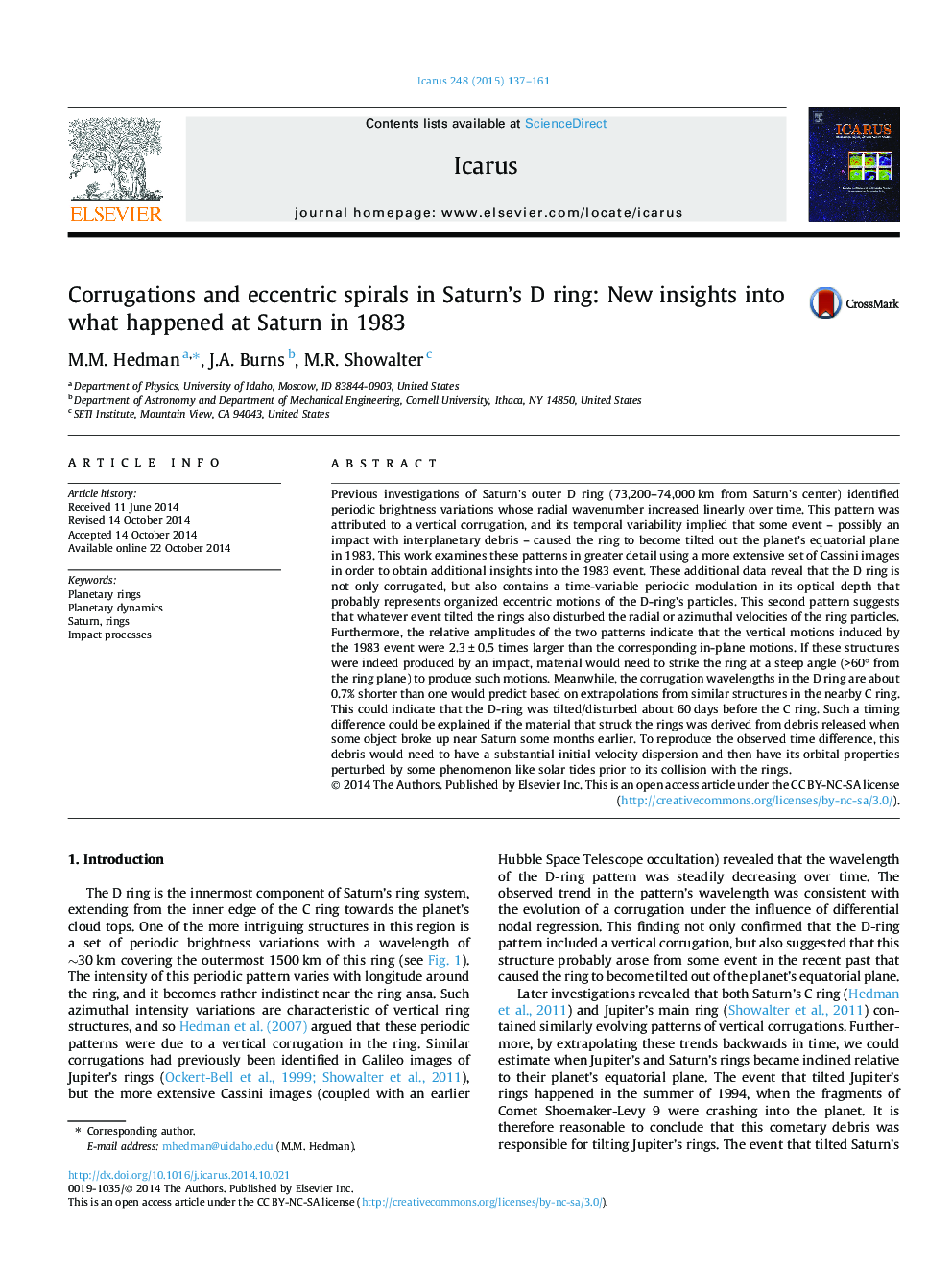| کد مقاله | کد نشریه | سال انتشار | مقاله انگلیسی | نسخه تمام متن |
|---|---|---|---|---|
| 8137012 | 1523542 | 2015 | 25 صفحه PDF | دانلود رایگان |
عنوان انگلیسی مقاله ISI
Corrugations and eccentric spirals in Saturn's D ring: New insights into what happened at Saturn in 1983
دانلود مقاله + سفارش ترجمه
دانلود مقاله ISI انگلیسی
رایگان برای ایرانیان
کلمات کلیدی
موضوعات مرتبط
مهندسی و علوم پایه
علوم زمین و سیارات
علوم فضا و نجوم
پیش نمایش صفحه اول مقاله

چکیده انگلیسی
Previous investigations of Saturn's outer D ring (73,200-74,000 km from Saturn's center) identified periodic brightness variations whose radial wavenumber increased linearly over time. This pattern was attributed to a vertical corrugation, and its temporal variability implied that some event - possibly an impact with interplanetary debris - caused the ring to become tilted out the planet's equatorial plane in 1983. This work examines these patterns in greater detail using a more extensive set of Cassini images in order to obtain additional insights into the 1983 event. These additional data reveal that the D ring is not only corrugated, but also contains a time-variable periodic modulation in its optical depth that probably represents organized eccentric motions of the D-ring's particles. This second pattern suggests that whatever event tilted the rings also disturbed the radial or azimuthal velocities of the ring particles. Furthermore, the relative amplitudes of the two patterns indicate that the vertical motions induced by the 1983 event were 2.3 ± 0.5 times larger than the corresponding in-plane motions. If these structures were indeed produced by an impact, material would need to strike the ring at a steep angle (>60° from the ring plane) to produce such motions. Meanwhile, the corrugation wavelengths in the D ring are about 0.7% shorter than one would predict based on extrapolations from similar structures in the nearby C ring. This could indicate that the D-ring was tilted/disturbed about 60 days before the C ring. Such a timing difference could be explained if the material that struck the rings was derived from debris released when some object broke up near Saturn some months earlier. To reproduce the observed time difference, this debris would need to have a substantial initial velocity dispersion and then have its orbital properties perturbed by some phenomenon like solar tides prior to its collision with the rings.
ناشر
Database: Elsevier - ScienceDirect (ساینس دایرکت)
Journal: Icarus - Volume 248, 1 March 2015, Pages 137-161
Journal: Icarus - Volume 248, 1 March 2015, Pages 137-161
نویسندگان
M.M. Hedman, J.A. Burns, M.R. Showalter,